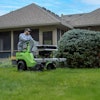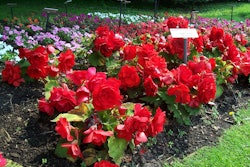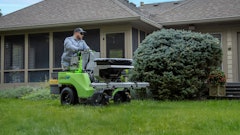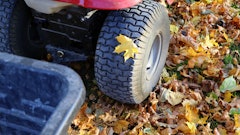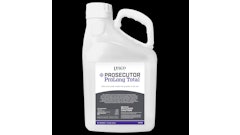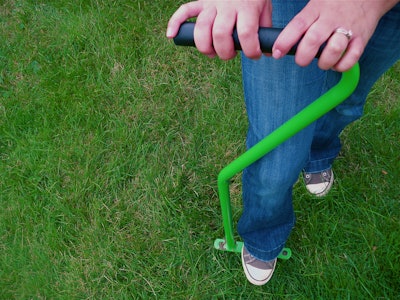
Now that fall is here, the leaves are starting to fall and if you’re like me—the hot and dry summer was hard on my lawn. As many of you know, autumn is the perfect time to spruce up lawns in preparation for winter. To ensure (hopefully) that next spring my lawn comes in lush and green, I followed these five steps.
Mowing and Dethatching
To first get to the root of what I was dealing with, I mowed the lawn to 2 inches. After discovering a thick layer of thatch, I used a rake to remove some of it—using vertical sweeps and leaving my lawn looking a tad thinner than when I’d started. Because my yard is so small I went this route, but if I’d needed to tackle a larger lawn I would have selected a motorized dethatcher, like some of the ones listed on our website.
Aeration
Then came aeration. Aeration is essential to loosening soil and improving drainage. Aeration also reduces thatch. Of course the process is a little more than just punching holes in the soil. The soil plugs need to be removed—and if left on the lawn can be greatly beneficial. Now when looking at my choices, I decided to go with the hand aeration tool, again this was because my lawn is so small, but had I gone with a motorized aerator I would have selected one of these. The lawn that had the hardest time this summer is the front lawn, which is small. It also gave me the freedom to work on it early in the morning before the sun was completely up, because there was no noisy engine to upset my sleepy neighbors.
The aeration hand-tool has two hollow tines that pull out the 2-inch plugs of soil. To use it, you step on the bridge in the middle of them while systematically going across the lawn in 12-inch intervals. After completion, the plugs were left on the lawn to break down on their own.
Overseeding and Fertilization
Due to the back and forth of the weather this summer—from unbelievably humid and rainy to hot and dry—my lawn was balding in multiple patches. There was also a large spot in the back lawn where a tree had been removed. The front lawn was simply over-seeded with Kentucky bluegrass seeds, mixed with a great deal of mulch that was picked up from the lawn and garden store down the street. The backyard, however, needed a little more. I went with an all-in-one lawn repair mix—which has the seeds, mulch and a quick start fertilizer all mixed in.
After seeding I completed the process by applying a nitrogen fertilizer. The spreader wasn’t distributing it in a way that I wanted it to, so I ended up throwing on a pair of gloves and dumping it into a bucket. I walked slowly from one corner of the lawn to the next, evenly spreading it around. While this isn’t a recommended way to spread fertilizer—due to inconsistency of spreading you can end up with bright emerald patches—I spent some time watching videos online to prefect my method. So far the lawn is greening up evenly, so fingers crossed that it will continue to do so.
To finish the entire process I set up a sprinkler to give the lawn a good 10-minute soak. The fertilizer was able to absorb into the lawn, helped along by the aeration. Only time will tell I suppose, but when the snow melts in the spring I’m expecting a lush lawn.


